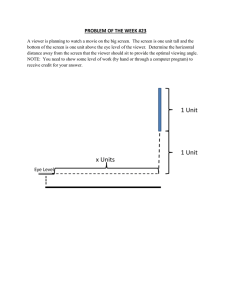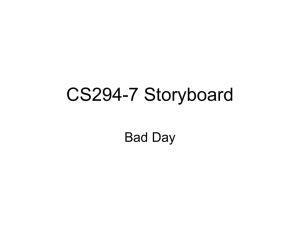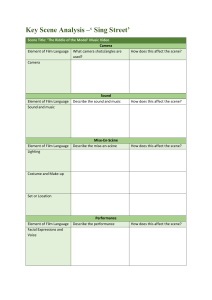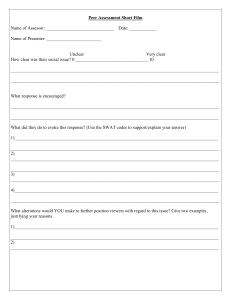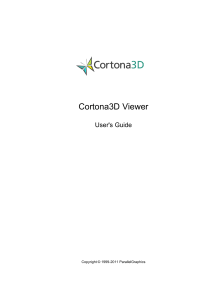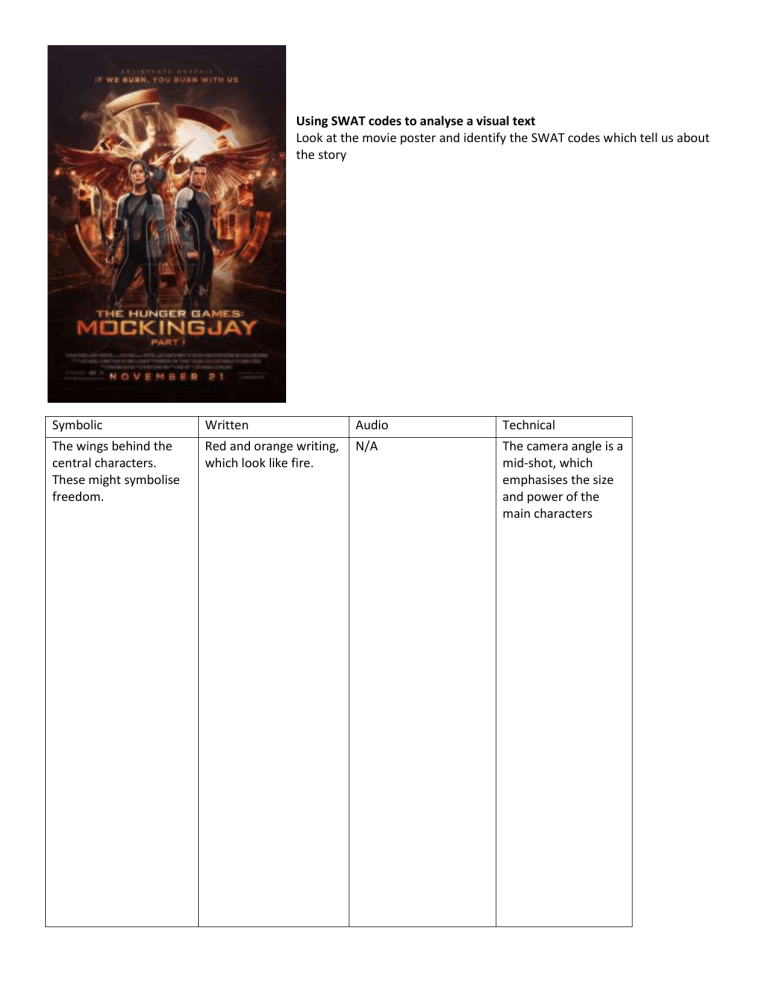
Using SWAT codes to analyse a visual text Look at the movie poster and identify the SWAT codes which tell us about the story Symbolic Written Audio Technical The wings behind the central characters. These might symbolise freedom. Red and orange writing, which look like fire. N/A The camera angle is a mid-shot, which emphasises the size and power of the main characters SWAT Codes Symbolic Written Audio Technical What we imply/infer What we read What we hear What we see Symbolism can be used to show a thought or idea. It is used to put an idea across to the audience. Symbols in film might include: Titles: the way a title might be written, or the font chosen, can add meaning to how we see a film. I.e. Finding Nemo title is in the shape of a fish/wave to `reiterate that idea of it being set in the sea Music: music is used to create certain moods; i.e. you wouldn’t use jazz music in a horror film. It also causes a physical reaction in the viewer; it can make them happy, sad, shocked, etc. Camera angles: these position the viewer so that they can understand the relationship between characters and about a character themselves. - Objects Setting Body language Clothing Shops Sounds Music Pictures Colour How we recognise a symbol depends on where we live, and what we learn from our families, and the surrounding environment as we grow up. Subtitles: For example, if it is very important that viewer know the exact setting of the film, the name of the town or a country will flash on the screen as a subtitle when we first cut to that setting. This setting may have some symbolic significance, so the written code ensures we know where it is. Signs: They can be literal, such as no smoking, or they can be used to show messages or ideas, such as in Tokyo Drift, where the mother asks ‘is it illegal to smoke in here?’ in front of a No Smoking sign. Narration: similar to point of view in a book, it helps a viewer get a greater insight into a characters mind, as well as additional information that we might not be able to see Sound effects: certain effects are used to help viewers form a response, i.e. the use of echoing footsteps to suggest a character is alone and vulnerable. It makes things sound more realistic, and highlight an objects power or effect. Dialogue: This is conversations between characters- it helps us form a response to a character. Silence: in some scene, silence will be used to emphasise an event. It can highlight fear, shock, suspense and tension. Camera shots: there are used to demonstrate different aspects of setting, themes and characters Camera movement: this helps to add a sense of realism to a scene, or is used to position the audience. Lighting: Lighting helps create a specific mood, emotion or atmosphere. The way that a scene is lit can create an emotional response In the viewer. Juxtaposition: this is where two shots are placed immediately after each other for effect; it usually compares two things to provoke a reaction; i.e. a shot of a character eating, and then a shot of a pig- this implies that they are a pig.

